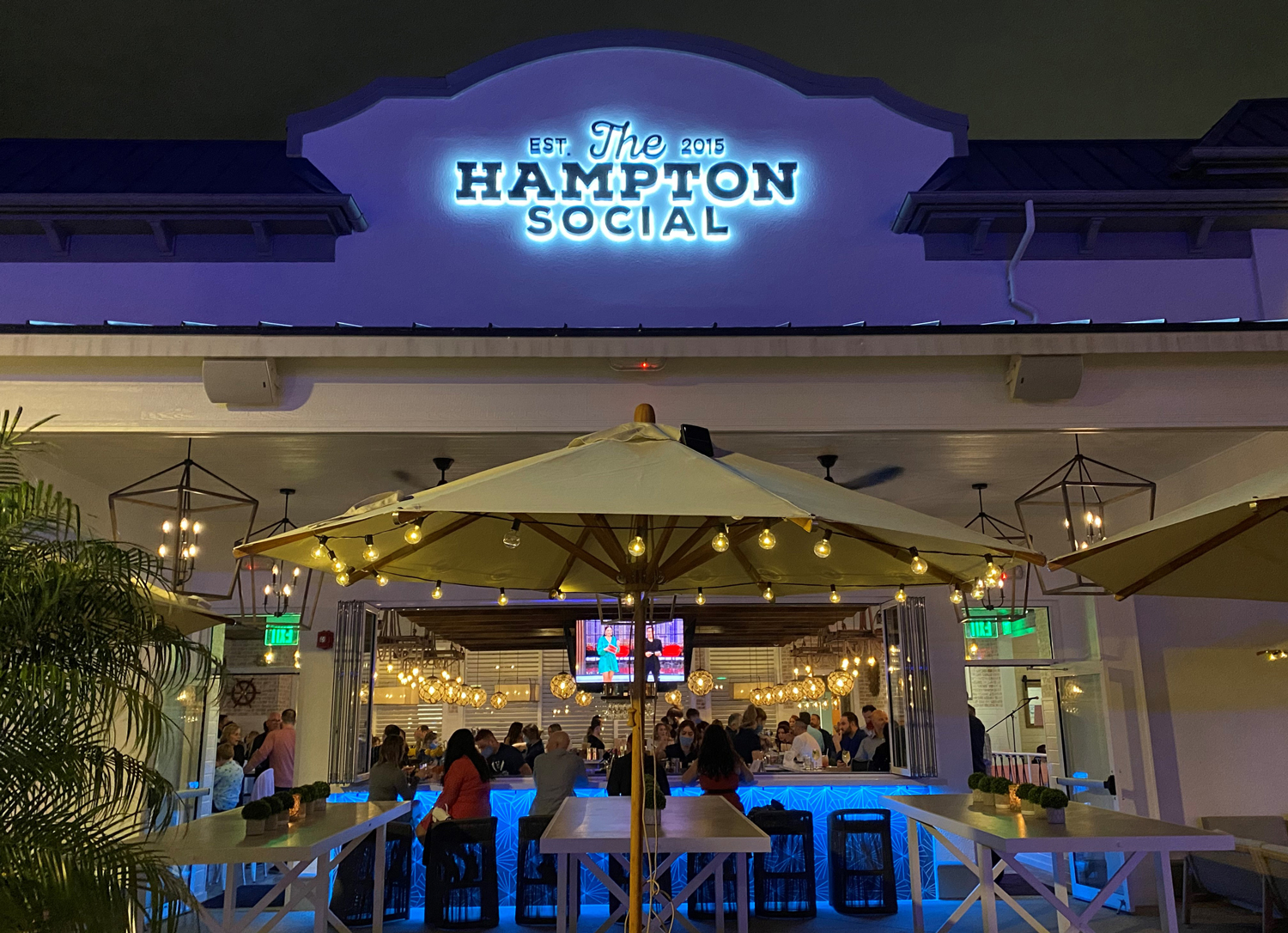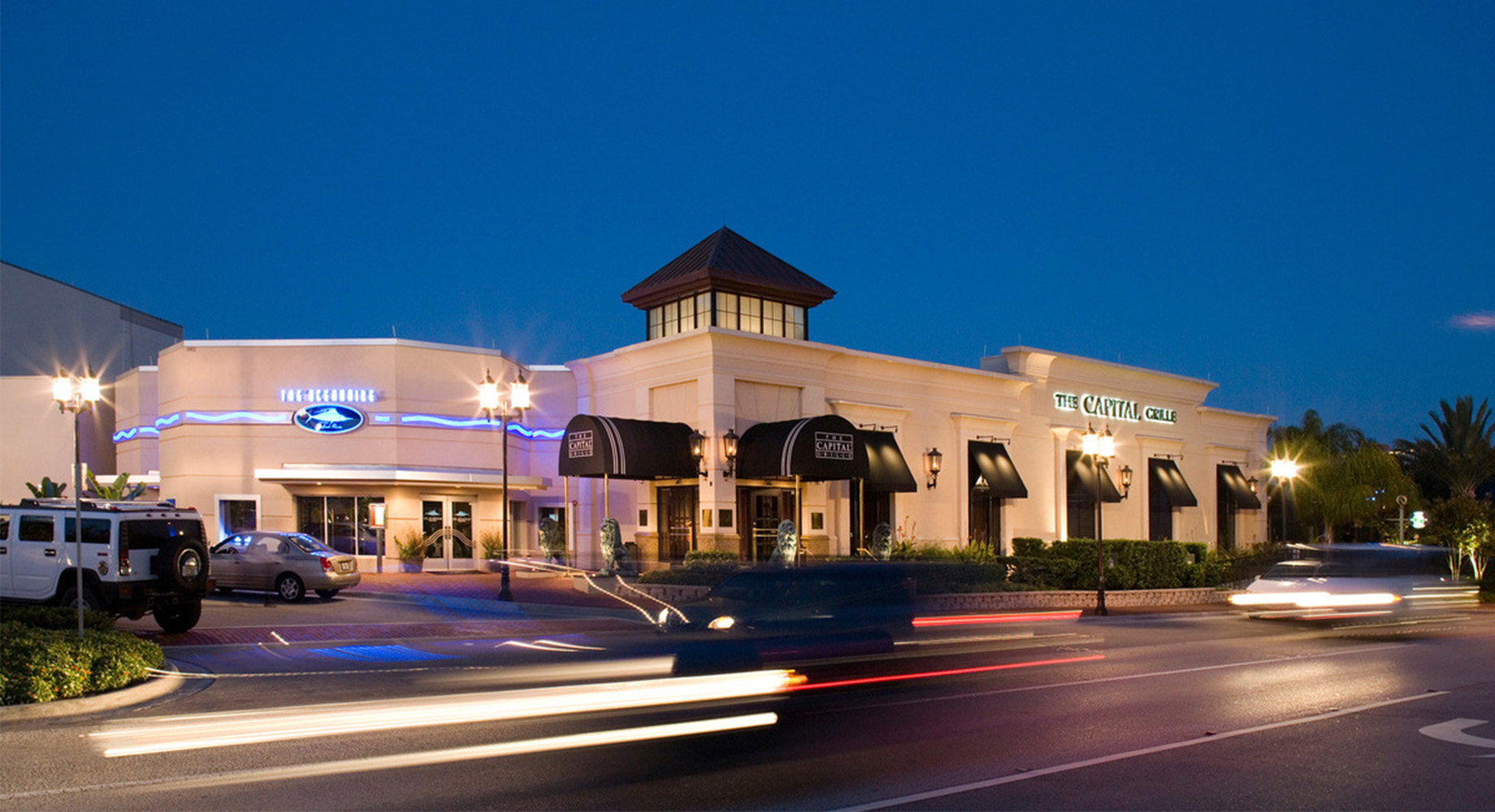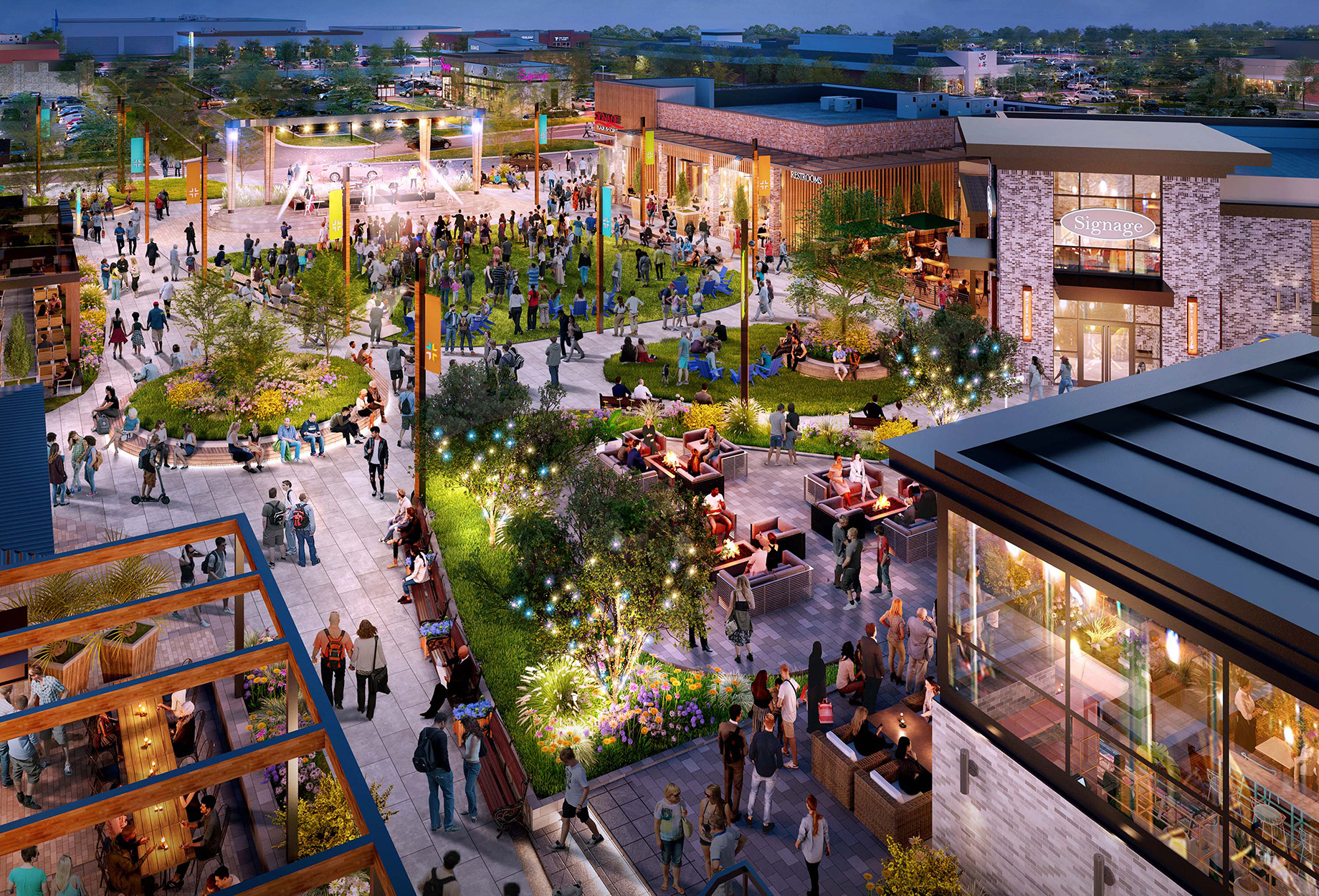The Short Version
- U.S. restaurant counts have rebounded post-pandemic, but some markets face the risk of oversaturation.
- Developers are using location-level data, operator feedback and consumer trends to evaluate food-and-beverage demand.
- Brixmor has moved ahead with restaurant offerings at properties like The Pointe Orlando and Block 59 in suburban Chicago.
- Oversaturation has emerged as a challenge in the Middle East, where restaurant development tilted too far toward fine dining at the expense of other price points.
- Experts stress the importance of scalable operations, diverse price points and sustainable growth to avoid market fatigue.
- Fast-expanding drive-thru chains can boost performance but require careful traffic and site planning.
- Despite rising costs, many operators and landlords see continued opportunity for strategic restaurant growth in high-demand locations.

How Much Restaurant Growth Is Too Much?
Food-and-beverage tenants are key traffic drivers for the Marketplaces Industry, but is there ever a danger of rolling out too much of a good thing?
The Expanding Footprint of U.S. Restaurants
The number of restaurant locations in the U.S. has grown by more than 5,000 since before the pandemic, according to consumer advisory and research firm Circana’s foodservice team. That’s 681,764 in 2019 and 687,253 as of September 2024. “Many restaurants closed, either temporarily or permanently, during the first year of the pandemic,” noted Circana vice president of public relations Shelley Hughes. “Since then, locations have been steadily growing year over year.”
But rather than focusing on the nationwide picture, some restaurant experts stress the need to scrutinize the mix and density of food outlets at smaller scales: individual shopping centers, destination resorts, neighborhoods, submarkets and the like. They also highlight the importance of examining restaurateurs’ balance sheets, operational systems and business skills given today’s high costs and robust competition.
“We do a lot of different research to figure out how much food-and-beverage we want to add to an asset,” said Brixmor senior vice president and head of leasing David Gerstenhaber. “How many restaurant dollars are already being spent in that market? Is there a void of it? We use all the tools at our disposal, and we also speak to our restaurant partners: ‘How many stores do you have here? How did these stores do? Is it a relocation?’ All those factors go into the decisions we make.”
Crunching the Numbers
To properly manage the parking lot and strike the right F&B balance, Brixmor carefully evaluates a range of variables, Gerstenhaber said, such as:
- consumer demand for specific restaurant categories
- population and tourism trends
- in-demand national or regional operators that are missing from the market
- peak traffic hours and/or days, based on Placer.ai data
- the financials and business plans of prospective operators
Gauging the Limits of Density in Orlando
Based on its analysis, Brixmor chose to go big on F&B as part of its reinvestment in Florida’s Pointe Orlando. The REIT finished a $39 million redevelopment there last year, and a $38 million, 55,000-square-foot second phase is slated to open in 2026. In total, the property boasts 16 restaurants, and Taffer’s Tavern and Zukku-San Sushi Bar & Grill are under construction. Located on International Drive, the center is within what is already “one of the densest entertainment and food-and-beverage corridors in the country,” Gerstenhaber noted.

Coastal-inspired restaurant Hampton Social, based in Chicago, opened one of its first outposts elsewhere in 2021, at The Pointe Orlando. The brand is expanding with locations in Florida, Georgia, Illinois, Colorado, Tennessee and Texas. Photos above and at top courtesy of Brixmor
That restaurant density did not deter Brixmor from adding even more at The Pointe Orlando, simply because the market’s demand drivers are extraordinarily strong. The 414,000-square-foot center is surrounded by more than 125 hotels and is minutes from Universal Studios, SeaWorld and Walt Disney World. Across the street is the Orange County Convention Center — the country’s second-largest — which drew 1.7 million attendees in 2024. “We have a lot of full-service restaurants at The Pointe,” Gerstenhaber said. “The majority of them are large spaces and can accommodate large groups.”
That includes top-five-performing U.S. locations for both The Capital Grille and Maggiano’s Little Italy, Gerstenhaber said. Among The Pointe’s other F&B tenants are The Hampton Social, Kavas Tacos + Tequila, Rodizio Grill, Blue Martini and Cuba Libre Restaurant & Rum Bar. The property also features Live at The Pointe Orlando. The dining and entertainment hub from The Cordish Cos. includes 36,000 square feet for five of Cordish’s own dining concepts, Shark Bar, PBR Cowboy Bar, Houndsmen Lounge, Sports & Social, Sal’s Pizza and Palm Tree Club. “We are now getting close to $100 million in annual restaurant sales in one asset,” Gerstenhaber said of The Pointe.

Proximity to Walt Disney World and the nation’s second-largest convention center has contributed to Brixmor’s ability to grow The Pointe Orlando’s food-and-beverage lineup, including The Capital Grille steakhouse. Photo courtesy of Brixmor
Where Oversaturation Is Real — and Why
While developers take precautions to avoid restaurant oversaturation, it can still occur — and has emerged as a challenge in wealthy Gulf states like Saudi Arabia and the United Arab Emirates, said restaurant strategist Aaron Allen. His eponymous consultancy has analyzed F&B lineups at airports, malls and megaresorts for the likes of royal families and sovereign wealth funds.
Allen recounted projects where Middle East developers had allocated as much as 40% of space for fine dining, a ratio that can price out too many diners. These developers can be wealthy enough to operate without the moderating scrutiny of banks or private investment partners, a dynamic that can lead to overbuilt projects that turn into “cash furnaces,” Allen said.
The consultant has advised developers of multibillion-dollar Las Vegas casino resorts to offer F&B lineups that reflect the variability of guests’ spending power. “They will have maybe 50 food-and-beverage venues, but the bulk of that is going to be in a tiered pyramid or hierarchical structure,” he explained, with “some flagship fine dining but also limited-service restaurants all the way down to quick-serve, counter-type environments.”
Wall Street’s hunger for profits also can spur corporations to open too many food outlets, added Synergy Restaurants Consultants managing partner Daniel Bendas. “You might not have the management structure in place to maintain the brand and the experience,” he said. “You can see the same thing with franchisers where they might start selling franchises to areas that are not right for the brand. It is critical to grow at a pace that you are comfortable with.”
Spikes within specific categories also can raise the risk of oversaturation. Allen pointed to the “better burger bubble” of a decade ago, when Shake Shack went public and the likes of Burger Fi, Burger Fuel, Bareburger, Wayback Burgers, Mooyah and Smashburger all trumpeted big plans to scale up. “There was this flurry of announcements: ‘We are going to open 200, 400 or 1,000 units all in the next five years,’” Allen recalled. “When you added that up, it was twice or more the total volume of all hamburger places that had opened in the prior five years. You can end up making individual declarations in a vacuum of who else might be doing what else.”
As Bendas sees it, saturation within markets, properties or categories just makes life tougher for restaurateurs. “When there are more restaurants and less space, it is harder to find talent, as well as the right real estate, and the costs of locations, rent and labor all go up.”
The Drive-Thru Dilemma
Today’s explosion of drive-thru concepts — Dutch Bros Coffee, for example, reportedly aims to jump from about 1,000 stores to more than 2,000 over the next four years — is part of the reason that cities are tightening drive-thru regulations and that “finding a good drive-thru location is getting harder and harder,” Bendas said.
From the landlord perspective, Gerstenhaber added, those fast-expanding drive-thru concepts can bolster asset performance, but they do take up large chunks of the parking lot and create long queues that need to be carefully managed. “We are super analytical of how the traffic is going to flow and what the day parts are,” he said. “There is a home in a lot of centers for those drive-thru and double drive-thru operators. It all depends on how you program them and where you put them.”
Fortunately, operators like Dutch Bros and Chick-fil-A keep getting better at moving cars quickly, Gerstenhaber said. “Those long lines mean lots of customers spending a lot of money and tenants that can afford healthy rents and stay long term.”
How Operators Can Grow Smarter
On the operational front, Bendas advises restaurateurs to grow sustainably by:
- paying close attention to the fine print in the leases they sign, especially clauses related to how much leeway landlords have to bring in competitors.
- getting highly specific about brand attributes, target customers and site-selection criteria. “Consider working with a broker who can help you pinpoint the areas where you want to grow,” Bendas said. “Focus on locations where you will be successful but also where you will not overlap if you open a second or third location.”
- developing scalable store prototypes and business models, right down to finishes, furniture, kitchen equipment and operational systems. “You have to think about what it will cost to build one of these over time,” Bendas said. “What will those costs be for your investors if you franchise or even for yourself if you want to expand?”
Future Demand and Strategic Development
In its 2025 state-of-the-industry report, the National Restaurant Association forecast that U.S. foodservice outlets will rack up $1.5 trillion in sales this year. The report also found that 29% of survey respondents expect to open new locations in 2025, while 37% postponed expansion plans in 2024 due to rising costs.
Brixmor, however, continues to see strong leasing potential in the restaurant category. One example is the Block 59 development within Westridge Court in Naperville, Illinois. “It’s a strong Chicago suburb where we have scraped an antiquated, two-level retail building to add a very dense food-and-beverage destination,” Gerstenhaber said. “The Cheesecake Factory opened very strong there a few weeks ago, and they are thrilled with their results.” The lineup of open and forthcoming venues includes Yard House, Ruth’s Chris Steak House, Piccolo Buco by Cooper’s Hawk, Shake Shack, Stan’s Donuts, First Watch, FreshFin, Crisp & Green and Velvet Taco.
MORE ON BLOCK 59: Turning an Almost Vacant Corner Parcel Into a Sought-After Restaurant Destination

Driven by strong demand for food-and-beverage offerings, Brixmor created Block 59 in the Chicago suburbs. Rendering courtesy of Brixmor
Food-and-beverage also plays a key role in Brixmor’s plans for Britton Plaza, a newly acquired, 466,000-square-foot, grocery-anchored center near downtown Tampa, Florida. “Tampa is a huge foodie destination,” Gerstenhaber said. “We bought the center with the intent to redevelop it, reconfigure some boxes and have a whole lifestyle component out front, with national operators and chef-driven, local concepts. It’s really exciting.”
By Joel Groover
Contributor, Commerce + Communities Today